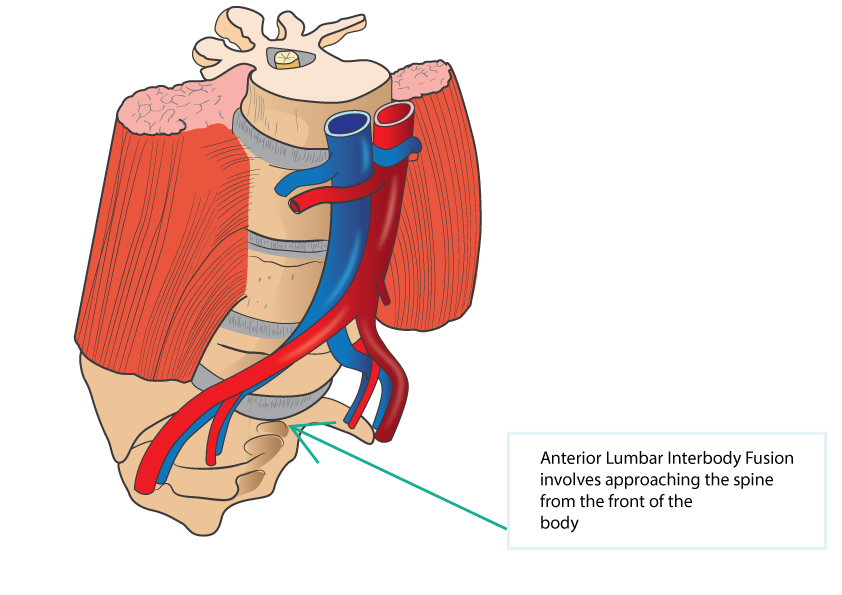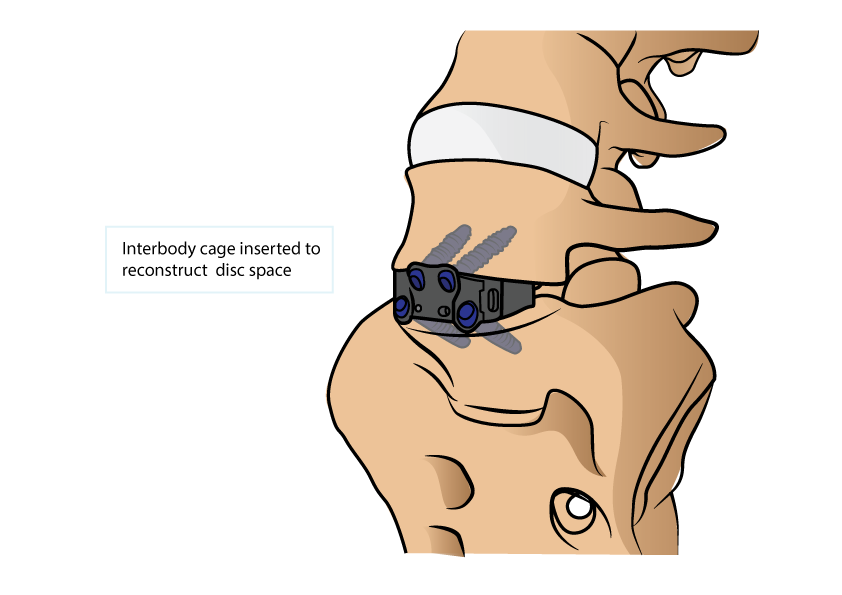

The Anterior lumbar interbody fusion (ALIF) is a minimal invasive spinal procedure performed to treat back and leg pain caused by degenerative discs and other problems of the spine such as spinal stenosis, spondylolisthesis and spinal deformity.The anterior lumbar interbody fusion involves approaching the spine from the front of the body. The procedure is performed under general anaesthetic. An incision is made through the abdomen. The abdominal contents are moved to one side, allowing access to the spine. Large blood vessels (aorta, common iliac artery and vena cava) that lie over the front of the spine are then carefully moved aside. Sometimes surgery is performed in conjunction with an access surgeon, who will mobilise the blood vessels if there are any concerns or difficulty with this. After the blood vessels have been moved aside, the disc is removed. A cage containing bone graft, is placed in the space created. Usually screws are used to secure the cage to the vertebral body above and below.
In some patients, additional approach through the back may be required to decompress the nerves. Screws and rods may need to be inserted above and below the reconstructed disc space to aid stability while the fusion takes place. Dr Lee commonly inserts these screws through minimally invasive techniques.There are a number of reasons why the ALIF is advantageous over traditional posterior (back) approach, these include:
- Providing a more direct access to the disc to reconstruct a collapse disc space and deformity
- A larger cage can be used for reconstruction, which will allow better restoration of neural foramina (channels in which nerve exit the spinal column), improve stability and fusion rate
- Avoid going though scar tissue from previous spinal procedures from the back
- Avoid damaging muscles of the back
Dr Lee can discuss this in detail with you if ALIF is recommended for your condition.

